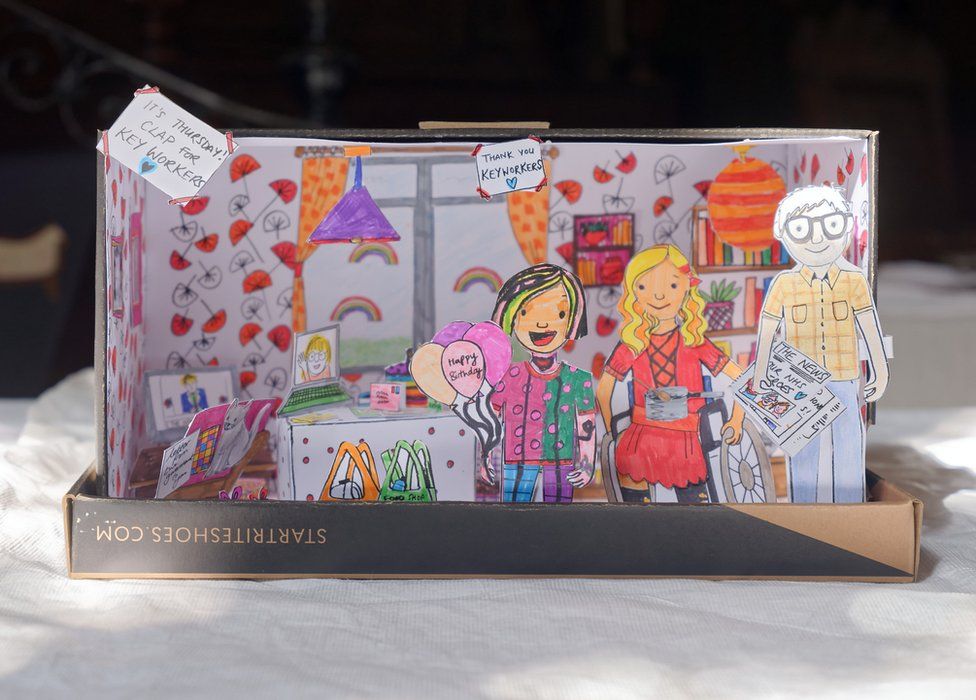-

-
-
Loading

Loading

Title: Collecting History in Real Time: Preserving the Pandemic Story for Future Generations Introduction: The arrival of Covid-19 in early 2020 disrupted organizations and businesses, leading to a state of turmoil. While many workers faced furlough, social distancing, and working from home, a small group of museum officers recognized that they were witnessing a significant moment in history. This is the story of how one museum service embarked on a mission to gather items in real time, capturing the essence of the pandemic for the benefit of future generations. Wayne Kett, a museum curator, had been in his role for just two months when the pandemic reached the United Kingdom. He had not anticipated setting up a major contemporary collecting project. However, that soon changed. Norfolk Museums, one of the local authority services, responded to the BBC's request under the Freedom of Information Act regarding Covid-related acquisitions during the pandemic. While some services collected only a handful of items, Norfolk Museums amassed an extensive collection ranging from digital photographs to personal testimonies and physical objects. Value of Everyday Objects: Among the items collected were everyday objects used during the pandemic such as masks, testing kits, signs, toilet paper, and medical scrubs. Mr. Kett emphasizes that the future value of these seemingly mundane items should not be underestimated. He draws a parallel to the ration books and gas masks from 1945, which now hold immense historical interest. Realizing the Significance: Mr. Kett recalls the initial days of the pandemic when people believed the situation would improve within a few weeks. However, the gravity of the situation soon became clear - history was unfolding before their eyes, and it needed to be preserved. Capturing information while people were experiencing it held immeasurable value, according to Mr. Kett. Notable Artifacts: One of Mr. Kett's favorite items is an opaque plastic container from Lacons, a brewer in Great Yarmouth. They organized a unique event called the "Ding, Dong Dash," replacing the disposal of beer with doorstep delivery. He also cherishes the various examples of personal protective equipment (PPE) sewn by volunteers from Norfolk Scrubs, the primary supplier of PPE for the James Paget Hospital during the pandemic. Gathering Perspectives: Cathy Terry, a senior curator in social history, aimed to gain insight into people's lives during the pandemic. To achieve this, a survey was created, gathering a varied range of responses. Some individuals found enjoyment in the break from family, while others struggled with the challenges of lockdown. Resonating Artifacts: Ms. Terry finds the pictures of new hobbies and homemade creations particularly resonant. These activities provided solace for individuals during these difficult times, often representing postponed aspirations. Collecting Different Perspectives: In addition to a wide collection of local and national newspapers, the museum service gathered materials from various viewpoints, including conspiracy newspapers, anti-vaccine sentiments, and anti-mask propaganda. Philip Myles, an eastern area curator, highlights the importance of telling all sides of the story, even when not everyone complied with government advice. The Story Behind the Collection: The collection aims to showcase the community's collective effort to overcome the challenges faced during this difficult period. Hannah Henderson, curator of community history, emphasizes that the project was not just about collecting objects but about connecting with people and understanding their experiences. The service actively sought out intangible examples of mutual aid, alongside three-dimensional objects, including photographs and digital assets. Conclusion: While physical artifacts may be the focus of museums, the collection of photographs documenting empty streets and shops has left a lasting impact on the curators. It signifies the need for ongoing work to truly comprehend and make sense of this historic event. The Norfolk Museums' initiative serves as a testament to the importance of preserving the pandemic story, ensuring future generations can learn from and understand the unparalleled challenges faced during these times.